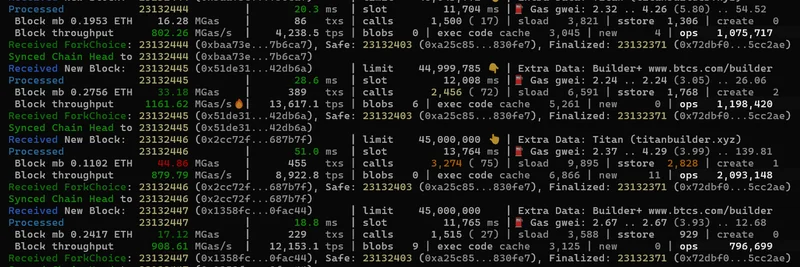Ben Adams, an Ethereum core developer and contributor to Nethermind, recently shared an exciting update on X (formerly Twitter). He's added a new feature to the Nethermind Ethereum client that logs the number of smart contract opcodes executed in each block. This tweak provides an additional layer of insight into what's happening under the hood of the Ethereum network.
For those unfamiliar, Nethermind is one of the key Ethereum client implementations, alongside others like Geth or Erigon. It helps run nodes on the Ethereum blockchain, processing transactions and maintaining the network's state. Opcodes, short for operation codes, are the fundamental instructions that the Ethereum Virtual Machine (EVM) uses to execute smart contracts. Think of them as the building blocks of any code running on Ethereum—from simple token transfers to complex DeFi protocols.
In his post, Adams notes that this logging doesn't include plain ETH transfers or precompiles, which don't involve opcodes in the same way. He also points out that not all opcodes are created equal; something like a CALL or SLOAD operation can be much more gas-intensive than a basic 256-bit ADD. This distinction is crucial because it highlights the varying computational costs within blocks.
Here's a look at the log output he shared, showcasing real-time data from processed blocks:
The logs include details like block numbers, gas usage, transaction counts, and even extra data from builders like Titan or Beaverbuild. For instance, you can see blocks with millions of opcodes executed, giving a sense of the network's workload.
Why does this matter? For developers and node operators, this feature acts as a powerful tool for block introspection. It allows for better monitoring of network performance, identifying unusually heavy blocks, or analyzing trends in smart contract activity. In the world of meme tokens, where rapid deployments and viral contracts are common, understanding opcode execution can help optimize gas costs and improve contract efficiency. If you're building the next big meme coin on Ethereum, tools like this can give you an edge in debugging and scaling.
Adams' contribution underscores the ongoing evolution of Ethereum clients, making them more developer-friendly. If you're running a Nethermind node, keep an eye on the latest updates via their official GitHub repository. This kind of transparency not only aids in research but also fosters a healthier, more observable blockchain ecosystem.
As the crypto space continues to grow, features like opcode logging remind us of the importance of robust tooling. Whether you're a seasoned dev or just dipping your toes into blockchain, staying updated on these advancements can supercharge your projects.




